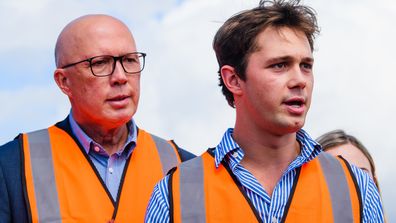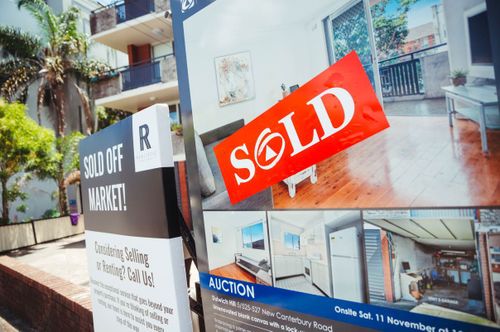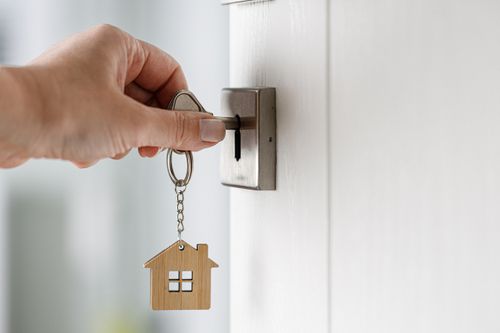Each plan is all about helping young people achieve the dream of home ownership without the “bank of mum and dad”, however according to the experts, making mortgages easier to obtain isn’t the solution.

Using $50,000 from your superannuation
“Your super is your money – not the government’s,” the opposition leader said on Sunday during his campaign launch in western Sydney.
But early superannuation withdrawal could have significant impacts on someone’s financial future, warns executive director of The Mckell Institute Rebecca Thistleton.
Thistleton said a sudden surge in young people having a house deposit in their bank account will only drive property prices up, particularly in capital cities.
“Our analysis shows that a super-for-housing scheme would add at least $69,000 to the price of the average house in Sydney, $108,000 in Melbourne and $159,000 in Adelaide,” she said.

“We also pinpointed how much a homebuyer would need to take from their super to realistically boost buying power.
“We found that using $10,000 to $30,000 to buy a home would do little to help a first homebuyer get into the market, but would leave them worse off at retirement compared to leaving that amount in their super long-term.”
Founder of Home Loan Experts Otto Dargan agrees extra borrowing power isn’t the solution, and instead said both parties should invest in boosting supply.
“They’re focused on the levers that they can pull easily as a federal government, whereas the issues are more to do with planning, development approvals and zoning which are the domain of the states,” Dargan said.

‘Almost impossible’: Dutton’s son Harry said he can’t afford a house deposit
Labor’s solution to getting young people on the property ladder is a scheme that would allow most first homebuyers to buy a property with just a five per cent, with the federal government guaranteeing a portion of the loan.
This would help a Sydneysider to purchase a $1 million property with a $50,000 deposit.
Dargan said this policy may help people who can’t rely on their parents to be guarantors on a home loan.
“This policy is particularly good for immigrants and people from less affluent backgrounds, it bypasses the bank of mum and dad,” he said.
However, mortgage broker Siddhartha Bajracharya said the cost of a five per cent deposit may get a lot bigger as house prices skyrocket under low supply.
“This will help more first-home buyers purchase houses as long as they can service and qualify but I think rather than this creating unmanageable home loans, it would only make the property prices go up,” he said.
“I think the government should push the land and construction side as well.
“More houses will probably bring the housing prices under control and I think the economy could benefit.”
Under the scheme, first-home buyers with a 5 per cent deposit wouldn’t have to pay lenders mortgage insurance (LMI), saving the average person around $23,000.
“You won’t have to pay a single dollar in mortgage insurance, our government will cover it,” Albanese said on Sunday.
“Australia will be better for helping people to get over this hurdle,” Dargan said of this promise.

Deducting mortgage interest payments from income tax
Easing mortgage stress was the second pillar of Dutton’s housing policy.
The Coalition said it would let first-time homeowners of newly built properties make mortgage interest payments tax deductible, which would save an average of $12,000 per year.
The scheme is limited to five years, is against only the first $650,000 of a home loan and is means-tested, with income caps of $175,000 for singles and $250,000 for couples.
Dargan said it would only make home ownership more accessible if banks took the scheme into account.
“The government would need to work with the Australian Prudential Regulation Authority (APRA) or consider amendments to the National Consumer Credit Protection Act to allow banks to include the tax-deductible interest when calculating borrowing power,” he explained.

$10 billion to build more homes
The federal government said, if re-elected, it will invest $10 billion into building 100,000 homes reserved just for first homebuyers to address the housing shortage.
Labor’s package will include $2 billion in grants and $8 billion in zero-interest loans or equity investments.
Experts have consistently pointed to increasing supply as one of the only real ways to move the needle on house prices.
“Homebuyer incentives must come with more housing supply, otherwise prices will rise,” Thistleton said.

“Building more homes depends on having enough workers, and while Labor’s free TAFE and apprentice support will help, we need a clear construction workforce plan.”
“Labor’s policy appeals to people struggling to save for a deposit while paying rent.
“Importantly, Labor’s policy includes new housing construction specifically for first homebuyers.”
Dargan agreed and said extra housing might not look like the white picket fence dream – but it would do the job.
“It means building high rises and being unpopular with people in those suburbs,” he said.
“It means letting go of the dream of the quarter-acre block.
“Let’s be honest, first home buyers don’t want a backyard and Hills Hoist anymore, they just want somewhere to live.”
The Coalition said in March it has a plan for a $5 billion housing infrastructure fund.






